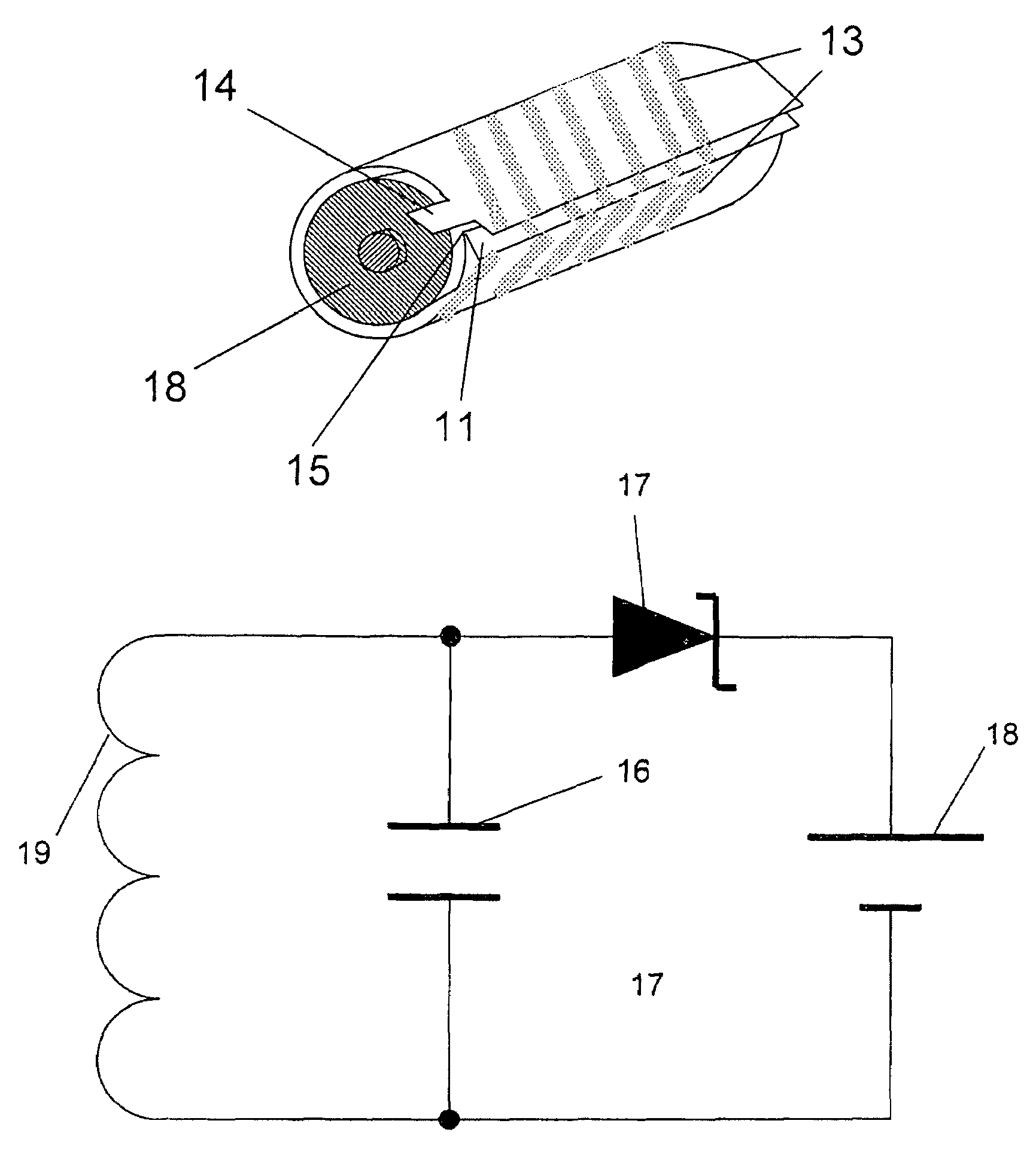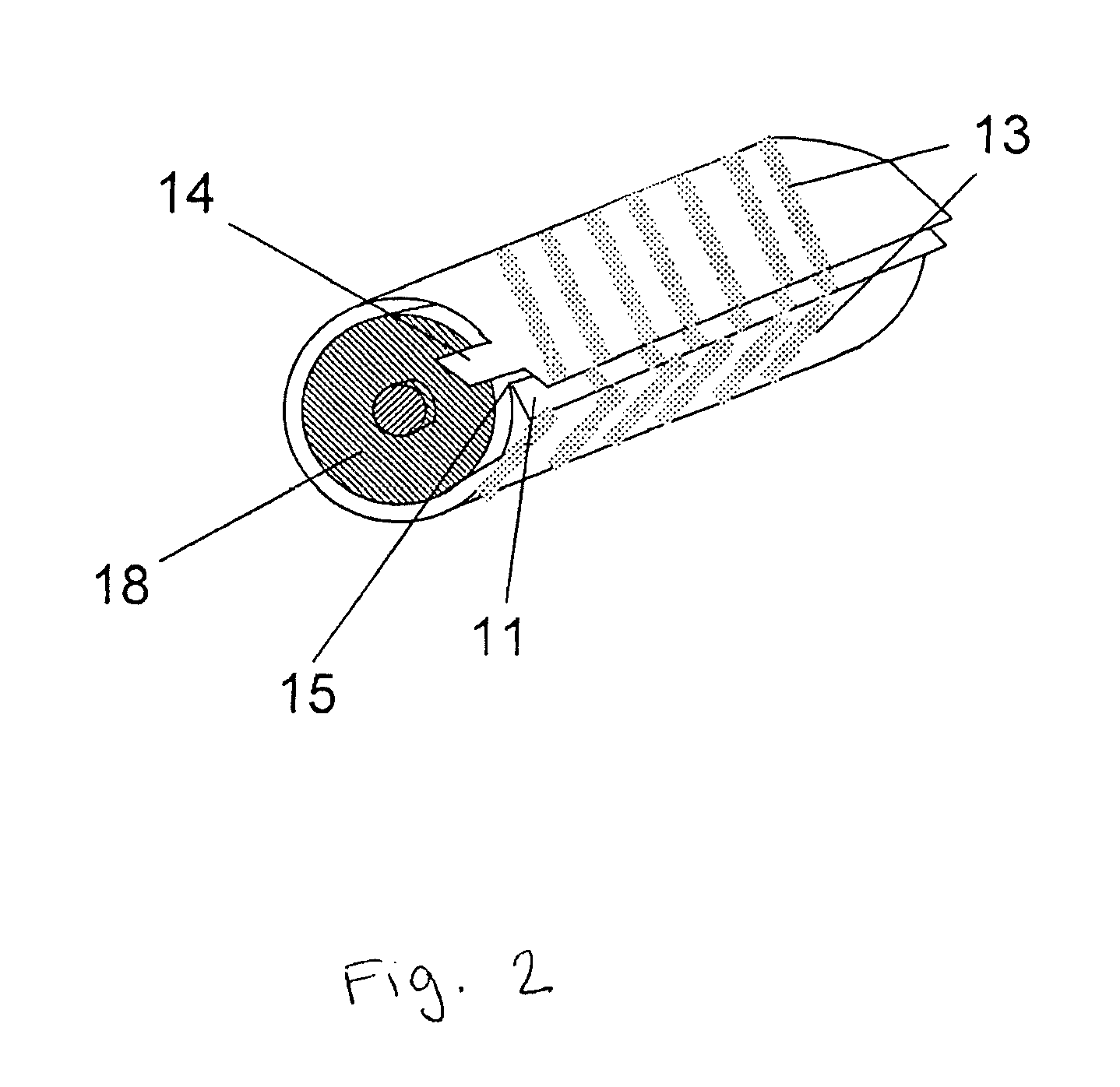Battery label with wireless battery charging circuit
- Summary
- Abstract
- Description
- Claims
- Application Information
AI Technical Summary
Benefits of technology
Problems solved by technology
Method used
Image
Examples
Embodiment Construction
[0020]An embodiment of the present invention comprises a modified version of a standard AA (or other sized) battery. In this embodiment of the present invention, the reverse side of the label on the rechargeable cell is printed with a pattern of lines using conductive ink. Conductive inks are well-known. The pattern on the self adhesive label is shown at FIG. 1. Dimensions shown in FIG. 1 are for an “AA” sized battery which is typically 14 mm in diameter and 48 mm high. However, additional sized batteries may be used and the size of the adhesive label would be adjusted accordingly. The conductive ink pattern is overlaid with an insulating layer, then with the pressure sensitive adhesive that holds the label onto the cell once assembled. Three apertures 10, 11 and 12 are provided in the insulating layer and the adhesive layer.
[0021]The label, as shown in FIGS. 1, 2, and 3 comprises four layers, and is made from a material that is well-known to one of ordinary skill in the art. The la...
PUM
 Login to View More
Login to View More Abstract
Description
Claims
Application Information
 Login to View More
Login to View More - R&D
- Intellectual Property
- Life Sciences
- Materials
- Tech Scout
- Unparalleled Data Quality
- Higher Quality Content
- 60% Fewer Hallucinations
Browse by: Latest US Patents, China's latest patents, Technical Efficacy Thesaurus, Application Domain, Technology Topic, Popular Technical Reports.
© 2025 PatSnap. All rights reserved.Legal|Privacy policy|Modern Slavery Act Transparency Statement|Sitemap|About US| Contact US: help@patsnap.com



